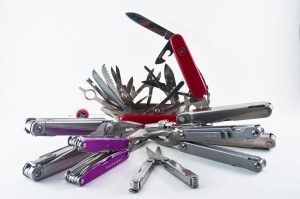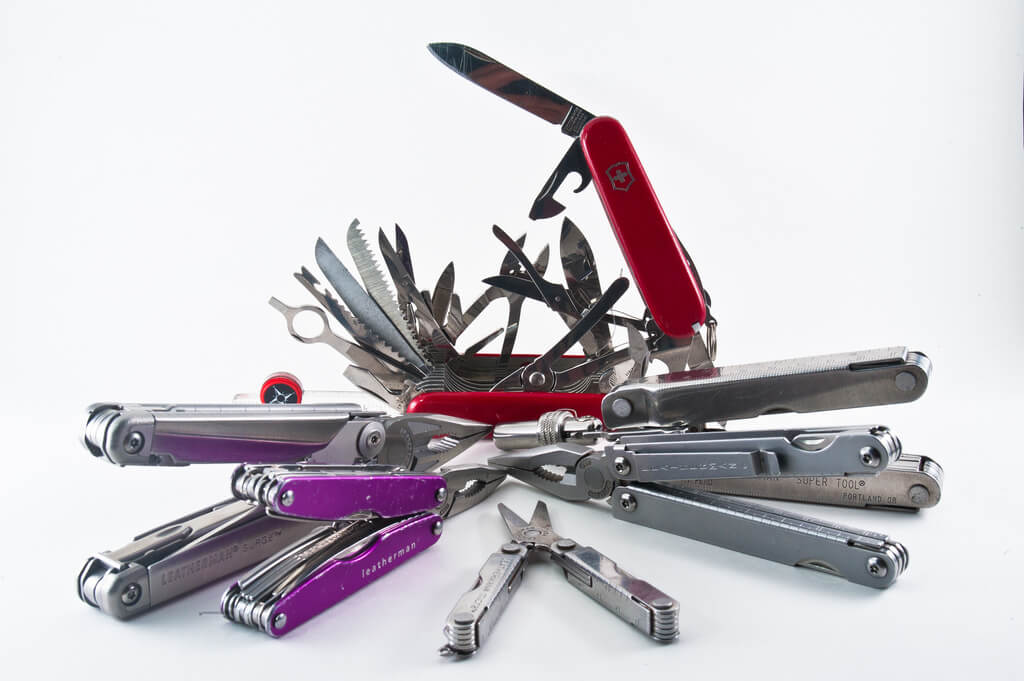 A couple of months ago, we posted a blog on Feedback, discussing some rules of thumb for making giving (and receiving) feedback more effective. This guidance was inspired by the work of Charlie and Edie Seashore, unmatched in the field of organization development, and friends of Benedictine. Feedback is one aspect of a broader concept, Use of Self.
A couple of months ago, we posted a blog on Feedback, discussing some rules of thumb for making giving (and receiving) feedback more effective. This guidance was inspired by the work of Charlie and Edie Seashore, unmatched in the field of organization development, and friends of Benedictine. Feedback is one aspect of a broader concept, Use of Self.
___
Most everyone has heard the expression, “If all you have is a hammer, everything looks like a nail.” For the purpose of driving nails, the hammer is ideally suited, and has been refined for just that purpose. But what if instead you need to drive a screw? The hammer is a lot less useful, and at best it does a messy, clumsy job.
What if there was a tool that could adapt effectively to the needs of any situation? We see commercials for bargain-priced multi-purpose tools every holiday season, but there are limits to their versatility, usefulness, and quality.
A Multi-Purpose Tool for Every Job
When it comes to leadership – leading organizations, people, and processes – there is one multipurpose tool that that is highly versatile, and useful in any and every leadership situation. This tool can be used to communicate, assess the situation, determine and implement a plan of action, evaluate progress, and revise the course of action as needed. Not an assessment or 360 degree feedback tool, not a change model, not a leadership theory or methodology; this tool encompasses all of these and more.
Q: So where can I get this versatile tool, and how cumbersome is it to carry around??
A: You have it with you now, and it is so portable you don’t even realize it! This versatile, multipurpose tool is your self.
Use of Self, As an Agent (or Instrument) of Change
First, a little background: Carl Jung, the renowned Swiss psychiatrist and psychotherapist who founded analytical psychology, was one of the earliest theorists to deeply consider the concept of self, particularly around consciousness and the unconscious (Jung, 1921). F. Mattias Alexander developed a technique and published The Use of the Self in 1932, with the premise that with awareness we can consciously use our selves, integrating the physical and the mental, more optimally (Alexander, 1932). Charles Seashore, preeminent social psychologist and organization development consultant, developed and refined his own use of self, as well as his theoretical model of use of self, over decades of work with organizations, groups, and individuals (Nash, 2014). Seashore made the concept practical, and provided guidance for optimal use of self.
An early mind map of Seashore’s theory separated the concept of use of self into two primary aspects:
- Awareness of impact, and
- Development of choice
In order to be effective, as a leader, as a change agent, or in any role, one needs to be aware of the impact s/he is having, and make conscious, deliberate choices about how to be. This latter concept is also called agency.
Self-awareness and agency continued to play major roles in Seashore’s theory development and practice over the years. In 2004, in collaboration with doctoral students, he refined his theoretical model, incorporating the process along with the theoretical areas which impact use of self (Seashore, Nash, Thompson, & Mattare, 2004/2014).
With characteristic playfulness to temper the intellectual concepts, Seashore begins with the Jungian concept of the unconscious, where we act without conscious awareness or intention. It is here that we go through our days on “autopilot,” unaware that we have choices or options in our interactions with others.
Conscious Awareness = Deliberate Choices
Through the process of self-differentiation (Jung, 1921), individuation (Maslow, 1943), or literally, development of consciousness (Kegan, 1982), we become self-aware of our patterns and habits, needs, triggers, styles, and defenses. We become aware that we have various selves, that we “perform” depending upon the situation and the relationships involved. Conscious awareness of these tendencies allows us to make deliberate choices, to optimize the use of our whole self in the moment. Support for development of this ability comes from support systems, feedback, and a sense of agency and self-efficacy. Hindrances to this capability include anxiety, transference, and environmental “threats” such as collusion and interpersonal difficulties. Once aware and able to make conscious, deliberate use of self, we optimize our ability to impact individuals, groups and organizations, in a wide variety of ways (Nash, 2014).
To summarize, there are three key steps in the quest to use one’s self optimally.
1) Self-awareness is the first step.
2) Once areas of opportunity are recognized, one can draw on a variety of support systems to develop. Feedback, coaching, and higher education are some avenues to pursue in one’s quest for development.
3) Intentional development leads to the ability to be in conscious, deliberate, effective ways.
Rather than a hammer, perhaps we can now function as a leatherman tool, with an effective intervention for any situation always at hand. So keep seeking that feedback, and develop the tool that is you!
___
Dr. Mike Manning is a Professor of Leadership, Strategy & Change at Benedictine University and a globally recognized researcher and consultant in leading organization change. Dr. Mary Nash, Principal, The Nash Group, consults to organizations worldwide with a focus on strategic transformational change.
___
References
Alexander, F. M. (1932). The use of the self. Gollancz, UK.
Jung, C.G. (1921). Psychological types. Princeton, NJ: Princeton University Press.
Kegan, R. (1982). The evolving self: Problem and process in human development. Harvard University Press.
Maslow, A. H. (1943). A theory of human motivation. Psychological Review 50: 370-396. American Psychological Association.
Nash, M. M. (2014). Organization development’s consummate scholar-practitioner: The life and contribution of Charlie Seashore. The Journal of Applied Behavioral Science, 50(2), 214-226.
Seashore, C. N., Nash, M. M., Thompson, G. & Mattare, M. (2004). Doing good by knowing who you are: The instrumental self as an agent of change. OD Practitioner, 46(1), 49-53. (Original work published in OD Practitioner, 36(3), 42-46, 2004).
Photo Credit: pennuja via Compfight cc

